MXA RACE TEST: THE REAL TEST OF THE 2019 KTM 250SXF

Q: FIRST & FOREMOST, IS THE 2019 KTM 250SXF BETTER THAN ITS PREDECESSOR?
A: For the most part, yes. The chassis, suspension, ergonomics and total overall feel have improved; although, the power spread feels a lot like last year’s 2018 Husqvarna FC250—fast but choked up. Yes, Virginia, they are identical engines; however, the newly designed KTM airbox and airboot seem to have something restricting airflow. Don’t worry, there’s an easy fix for that.

Q: WHAT IS NEW FOR THE 2019 KTM 250SXF?
A: We rode and tested the first iteration of the 2019 KTM 250SXF’s chassis, bodywork and suspension on the 2018-1/2 KTM 450SXF Factory Edition. Here is a refresher course on what was updated on all KTM four-stroke models for 2019.
(1) Frame. The technical name of the type of steel frame the KTM is made out of is 25CrMo4. It is classified as a high-tensile-grade steel that contains chromium and molybdenum, which is more commonly known as chromoly steel. The chromoly steel sections of the frame are bent into place by a process called hydro-forming and pieced together and welded by WP Performance robots. Hydro-forming is a process that uses extremely high-pressure water to expand metal tubing into two die halves.
This is nothing new, just as the geometry of the KTM’s frame from 2018 to 2019 isn’t new. If it ain’t broke, don’t fix it, right? If we were KTM, we wouldn’t change it either. Structurally, however, KTM found it could be improved. This led KTM to increase torsional stiffness by 10 percent and longitudinal stiffness by 2 percent. KTM’s engineers achieved this by redesigning the head tube gusseting and substantially beefing up the frame’s cross brace. The color was also changed from orange to black. The 250SXF engine remains virtually the same for 2019, save for the transmission. Although the gear ratios are the same, Pankel now makes all the parts.
The 250SXF engine remains virtually the same for 2019, save for the transmission. Although the gear ratios are the same, Pankel now makes all the parts.

(2) Head stays. In 2018, only the KTM 125SX and 150SX received aluminum head stays. For 2019, the head stays are aluminum on all SX models.
(3) Frame guards. The frame guards have a tackier surface and don’t run as high up on the frame. The right-side guard is much bigger to protect the rider from the heat of the muffler.
(4) Subframe. The subframe is lighter and 40mm longer than before.
(5) Battery. The upgraded 12.8-volt, 2-amp-hour lithium-ion battery offers more cranking power. This increases starting reliability, particularly in low temperatures.
(6) Clutch. The KTM 250SXF gets upgraded to the Belleville washer clutch similar to, but not the same as, the KTM 450SXF and 250SX clutches. The difference is the more powerful 450SXF and the 250SX get rubber inserts that damp the powerful jolts from gear to gear and the 250SXF doesn’t.
(7) Seat. The seat shape is more rounded and has more foam in the middle of the saddle. It also has a new seat cover that features nine thin silicone strips running 2 inches apart from each other for more grip. The seat is now held on with one bolt (instead of two) that is located on the left side of the bike—similar to the Husky design.
(8) Air box. The air filter box and intake snorkel have been redesigned.
(9) Fuel tank. The polyethylene tank has been redesigned, although it still has the same 1.85-gallon capacity.
(10) Exhaust. The exhaust is now a three-piece design so racers don’t have to take the shock off in order to take the pipe off. The header is much like last year’s 450SXF. It almost has a two-stroke shape to it. The muffler is a reworked design internally with a new canister profile and end cap. It also has a backfire screen built inside the muffler.
(11) Radiators. The radiators work more efficiently due to better liquid circulation and improved air ventilation. They are mounted 12mm lower and have a new slimmer shape. The coolant tube, called the T-piece, that passes through the frame is 4mm larger. With all the changes, the coolant system holds 11 percent more coolant.
(12) Valve timing. For the most part, the engine has remained generally the same for 2019. The only change we can find is to the valve timing.
(13) Transmission. The 2019 five-speed transmission has the same gear ratios as in 2018, with the gearbox built by Pankl Racing Systems, which is owned by KTM owner Stefan Pierer.
(14) Throttle body. The Keihin 44mm throttle body has been updated. It offers a new throttle cable mount and a redesigned manifold air-pressure sensor.
(15) Control unit. Different mapping was introduced to complement the new exhaust system. The injection system incorporates “split-injection” in certain areas of the different maps. The ignition timing and injection duration were also changed.
(16) Swingarm. The swingarm’s aluminum has been upgraded and has a longer chain adjustment slot, allowing the rear wheel to be positioned 5mm further back.
(17) Suspension. Front and rear suspension components receive updated valving. The WP 48mm air leg gets a new spacer that reduces air volume in the negative chamber by 50 percent. KTM’s goal was to allow the user to run a lower air pressure. For 2018, KTM recommended 154 psi; for 2019 it was lowered to 149 psi.

(18) Top clamp. The top clamp is 5 percent more rigid for 2019.
Q: HOW DIFFERENT ARE THE ENGINE CHARACTERISTICS FOR 2019?
A: With the first crack of the throttle, you feel like something is missing. It feels like the engine has a restrictor on it. Off the bottom, the power is sluggish in comparison to the 2018 model. Instead of the normal downshift into corners, riders were having to slam down two gears into first gear. Once the bike got moving, the engine felt freer but still restrained. The only time the engine felt like it could spread its wings was close to its 14,000-rpm rev limiter.
This choked-up feeling felt similar to issues we’ve had in the past with the Husqvarna airboxes. Although the Husky FC250 and KTM 250SXF engines are the same, the airboxes are very different. The Husky airbox offers no vents for the engine to breathe. The KTM’s airbox has more venting, which in the past gave it more throttle response than the Husky.
For 2019, the KTM 250SXF airbox has been redesigned. It has less air volume, and the vent is located farther forward (and closer to the filter than before). When we removed the airbox cover, the engine’s power was vastly improved throughout the entire spread.
Without the airbox cover, we didn’t have to downshift into first gear; you could keep it in second most of the time. We no longer had to abuse the clutch to get the bike moving out of corners. Test riders were able to clear jumps that they struggled with before. The engine revved out much faster from gear to gear, which made the sweet spot easier to get to. Opening up the airbox was a game-changer for our test riders. The downside was that Map 1 developed a lean pop on deceleration. The filter got dirty faster, and people looked at us funny when we rode by without an airbox cover. They even ran out on the track to wave us down to tell us it wasn’t there.
We aren’t 100 percent certain that the absolute cause of this problem is the airbox, but when we let the 2019 KTM 250SXF breathe, it resolves the problem. We feel that the updated technology in the mapping and new exhaust could also be part of the problem.
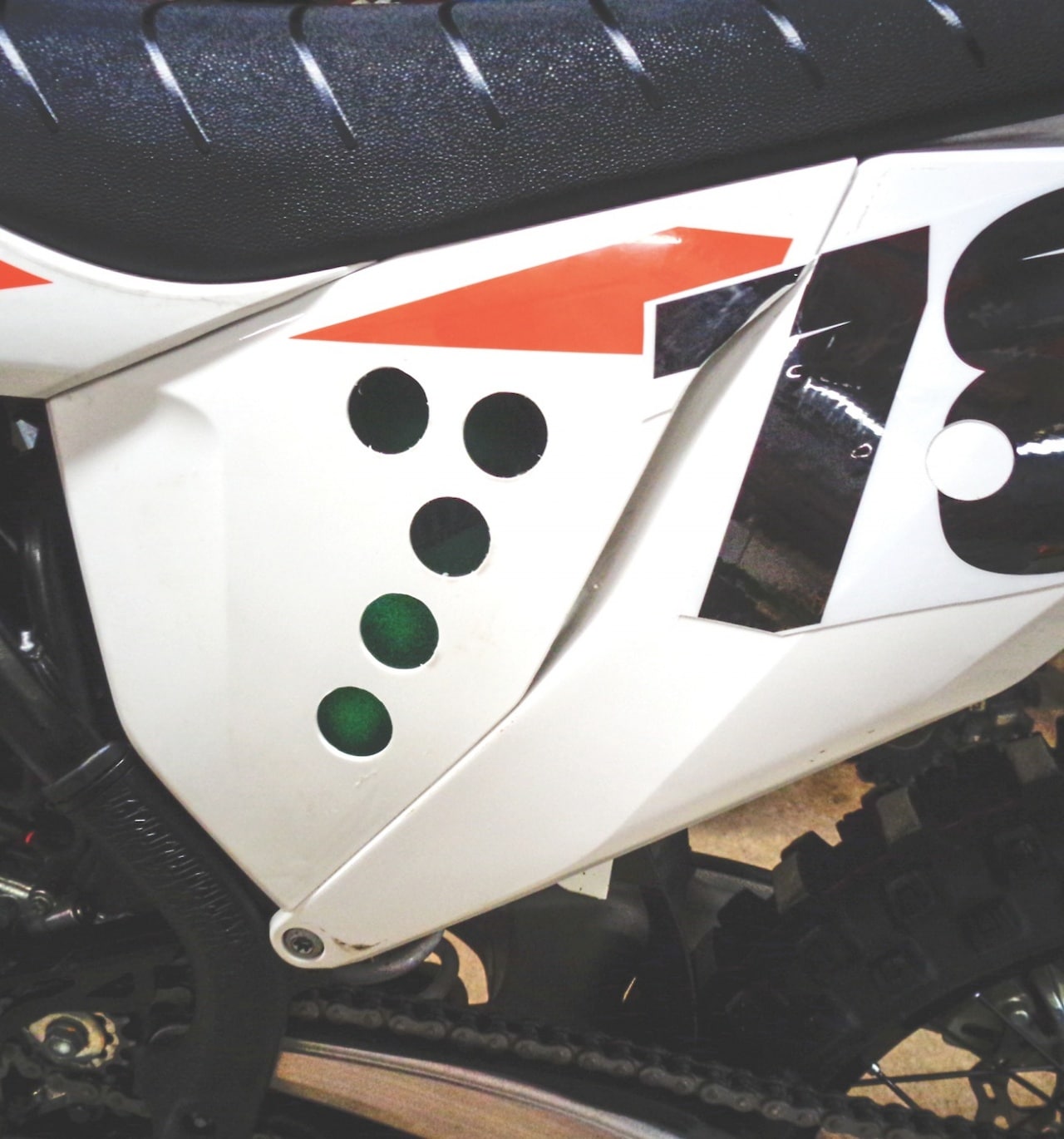
Q: WHAT DID WE DO ABOUT THE AIRBOX COVER?
A: We wanted to leave it off, but you can’t do that. Why not? First of all, the air filter will get dirty in a lap or two. Second, your boot will unhook the air filter cage strap, causing the air filter to fall out. We came up with two different options, mostly from our experience with Husqvarna’s asthmatic airbox.
(1) Best power. We drilled holes in the airbox cover until we got the same power without the airbox cover on. We used a 1-1/4-inch spade drill bit. We started with three holes. It was an improvement but still a far from cry from the performance gains with the cover removed. Five holes was better, but in the end we drilled 10 holes. It doesn’t look pretty, but it runs better.
(2) No holes. If you don’t want to drill holes, there is something you can do without anyone noticing. On the inside of the airbox cover, there is a lip that keeps dirt from getting inside the airbox. You can cut this off with a box cutter. Did cutting this off help? A little bit. It is better than nothing.
Q: DID WE CHANGE THE GEARING?
A: Stock gearing is a tall 14/51, which has a gear ratio of 3.64—the change to the 14-tooth countershaft didn’t make much sense since most racers were happy with the previous 13-toother. In 2017, we changed the countershaft sprocket from a 14 to a 13. This brought the gear ratio to a lower 3.92. This kept testers from having to shift down to first gear, and the bike pulled out of corners better. The downside was that you had to shift more and the shift points were sometimes in awkward spots. In 2018, we opted for a 14/53 combo (3.78). It was between stock gearing and the gearing we ran in 2017. Most riders liked the 14/53 gearing better. It wasn’t as jerky if you were in too low of a gear, and you didn’t have those strange shift points.
For 2019, the tall 14/51 gearing remained standard, as did the transmission ratios. Although the maps that the KTM’s control unit spits out from gear to gear have changed, we still know for certain that the stock gearing is no good. Thankfully, with the airbox cover off (or modified), we had no complaints from riders. With it on, slower riders went to a 13 countershaft while faster riders went with the 14/53 gearing combo.
Q: DID WE TAKE THE SCREEN OUT OF THE MUFFLER?
A: There is no way to gently take the backfire screen out. We punctured the screen with a long Phillips screwdriver multiple times, then tried to move the screen to the sides of the exhaust core as best we could. This screen is thicker than in years past (as it used to just blow out on its own). Did this boost power? Not really. If you are a hardcore racer and never ride offroad or anywhere that requires a backfire screen, then do it. If you do ride offroad, then leave it in. The airbox is smaller than last year, limiting its air intake to the engine.
The airbox is smaller than last year, limiting its air intake to the engine.
Q: WHICH IS BETTER, MAP 1 OR MAP 2?
A: The standard map is Map 1, and the aggressive map is Map 2. Most testers liked Map 1 better than Map 2. Map 1 had better bottom and mid, which allowed the power to move through the rpm range faster. Map 2 was all top. It felt sluggish off the bottom and took some time to get going. This was good for really fast tracks and fast riders. Traction control was liked by all riders in at least one spot on the track, but they disliked it in more spots than they liked it, as it robbed power when they seemed to need it most.

Q: DID THE HANDLING IMPROVE FOR 2019?
A: This was the best-handling 250F in its class for 2018. The front wheel tracked like glue and turned effortlessly. For 2019, it got even better. It seems that the additional torsional stiffness in the frame gives the 2019 KTM 250SXF a more precise feel coming into and through corners. No wiggle, no shake. Wherever you point it, it goes. It makes getting in and out of ruts, sand berms, and flat corners easy as pie compared to the competition.
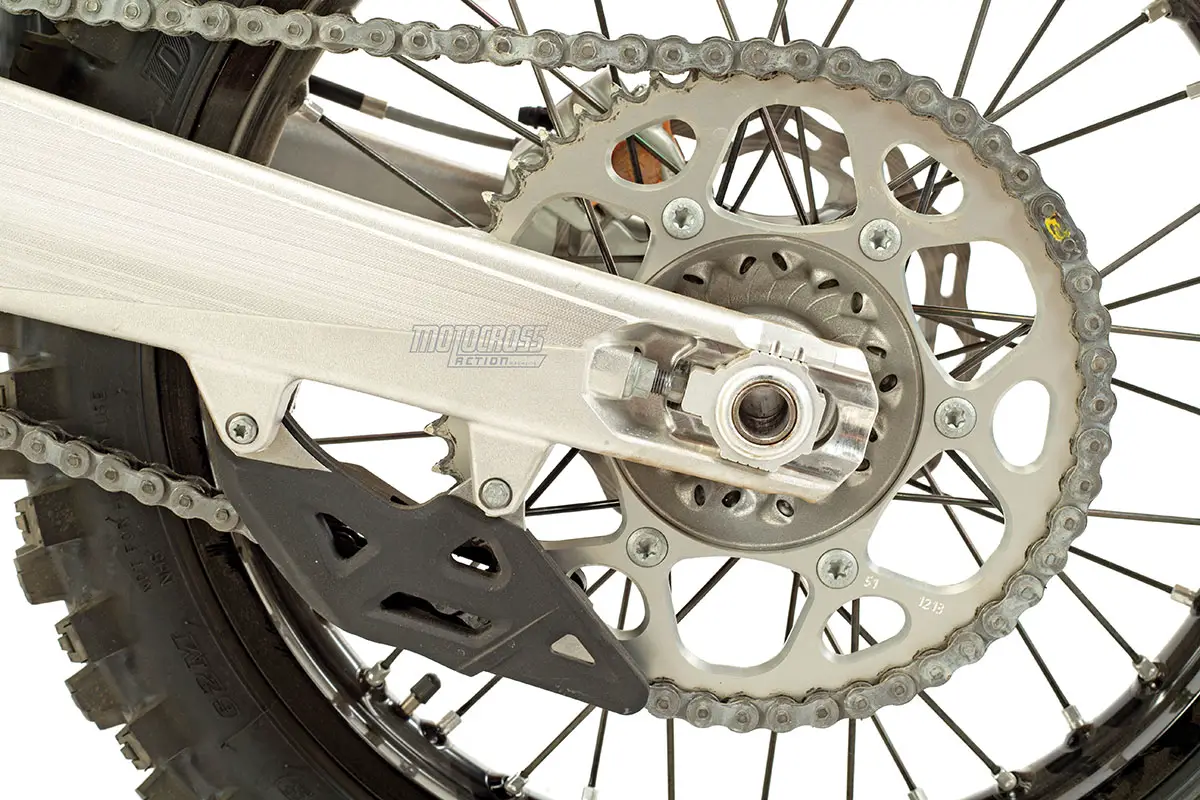
Q: ARE THE WP SUSPENSION COMPONENTS BETTER THAN LAST YEAR?
A: Yes. The front and rear shock work in unison with the chassis. The shock holds up better and has less side-to-side movement under a load. We dropped the sag down from 105mm to 107mm as the front end had a bit of an oversteer in sandy corners when the forks were at the third line. Testers complained that when sitting down in rough chop the shock felt harsh. After going 3/4 of a turn softer on high-speed compression, it resolved the issue.
With the changes KTM made to the WP 48mm AER forks, the standard pressure recommendation has dropped from 154 psi to 149 psi. KTM tends to set its standard air pressure on the stiff side. The stock 149-psi recommendation was too stiff for all of MXA’s test riders. The forks didn’t want to move when slapped down at that pressure. It was the same sensation that the old WP 4CS forks had. It started to bring back bad memories. We first thought it might be due to the stiffer top triple clamp, but the sensation went away when the air pressure was dropped into the 130s (and we went out on compression). Our faster riders found their happy place at 136 psi, while slower and lighter riders preferred 132 psi and below. Once riders found a pressure that suited them, all riders went out on the compression clicks to get past a harsh spot in the mid-stroke (most noticeable under hard braking in chop). Most riders found their best compression setting a few clicks from all the way out. This lower air pressure/less compression setup was great in stock trim. The forks accommodate riders skinny or fat. These are very good all-around forks, but they don’t run the same settings as they did last year. It will take some testing to find your special place. Our testers liked the standard Map 1 in most riding conditions as it had more bottom.
Our testers liked the standard Map 1 in most riding conditions as it had more bottom.
Q: WHAT DID WE HATE?
A: The hate list:
(1) Sprocket. Watch the sprocket bolts closely. They come loose.
(2) Spokes. KTM engineers said that they upgraded the spoke nipples to stop the spokes from coming loose. Sadly, the spokes still come loose, and the one by the rim lock should be on the FBI’s Most Wanted list.
(3) Airbox. Is it possible that KTM moved the engineer who designed the Husqvarna FC250 airbox over to the KTM design department? We think so, because the 2019 KTM has a bad case of Husqvarnitis. Ask your local dealer to provide a drill bit with your new KTM 250SXF.
(4) Front brake hose. Be very careful when hooking tie-downs onto your handlebars that they don’t crimp the L-bend tube coming out of the front brake’s master cylinder. Always use safety straps under the brake and clutch hoses.
(5) Gas hose. The gas hose gets tangled up when taking the gas cap on and off.
(6) Lock-on grips. We love KTM’s ODI lock-on grips. They make quick grip changes a simple task; however, we have hands that are made of cast iron because riding is our job. If you have tender hands, you will find that lock-on grips are hard on your palms. In that case, switch to regular glue-on grips; they are twice as thick.
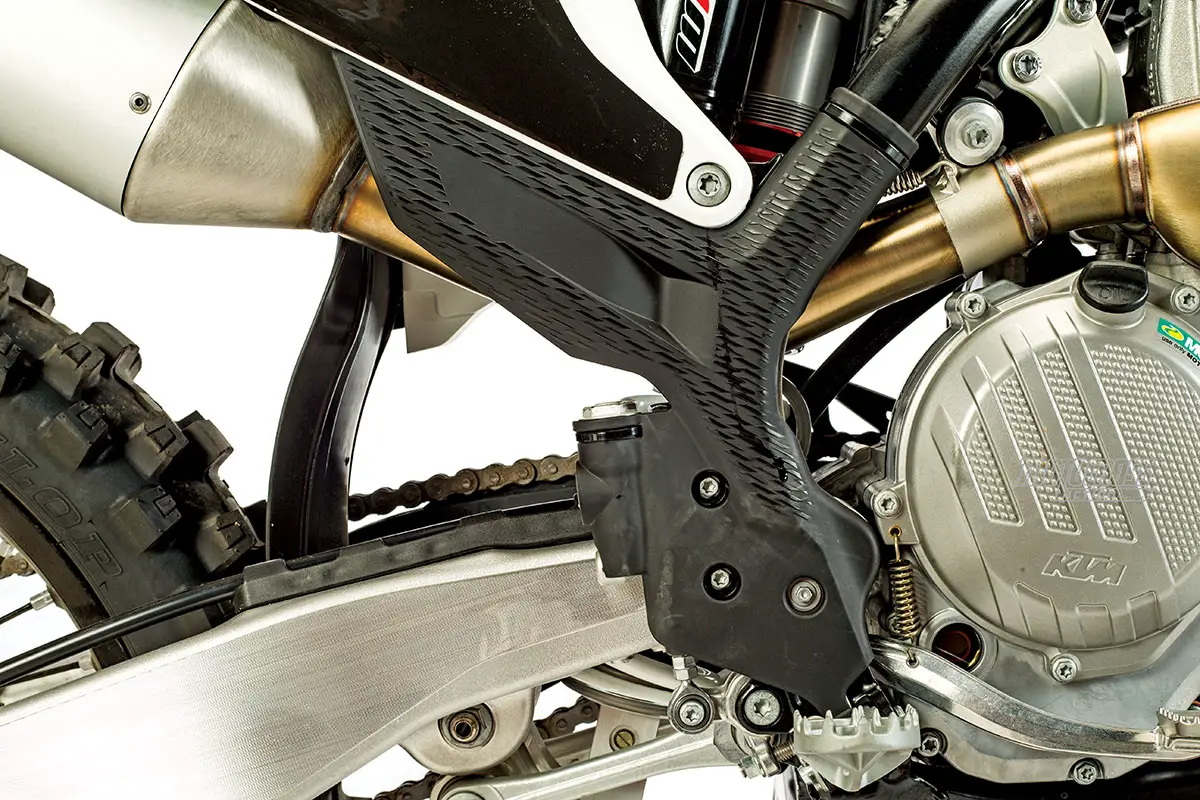
Q: WHAT DID WE LIKE?
A: The like list:
(1) Weight. The 2019 KTM 250SXF weighs 218 pounds, which is the same as last year, making it the lightest in its class—in some cases by as much as 10 pounds.
(2) Brakes. The KTM’s Brembo brakes are fantastic.
(3) Air filter. This no-tools airbox makes changing the air filter simple and easy.
(4) Hydraulic clutch. Having a self-adjusting, bulletproof clutch means one less thing you have to think about. This is a clutch abuser’s dream.
(5) Skid plate. Mounting tabs for a skid plate are already welded under the frame.
(6) Power. Even though the power felt suffocated in comparison to last year, it is still the most powerful 250F in its class. You get the most out of this powerplant by resisting any urge to shift. It makes peak power at 14 grand, and you have to get there to access it.
(7) Ergonomics. You feel comfortable the minute you swing a leg over the bike.
(8) Contact patch. The increased contact patch of the bodywork and frame improves your control in the air, on the ground and in corners.
(9) Gas cap. The gas cap doesn’t stick anymore.
(10) Radiators. The radiators are 12mm lower, which makes the feel at your knees much more comfortable.

Q: WHAT DO WE REALLY THINK?
A: There is no way around the obvious fact that the KTM 250SXF is the lightest and fastest bike in its class. It offers an engine that makes 43-plus horsepower at 14,000 rpm. All you have to do to utilize all the power is to resist shifting. It offers great brakes, electric starting, superb handling, a hydraulic self-adjusting clutch and workable WP suspension components. It is true that we’ve had some teething problems with the airbox, gearing and suspension setup, but once we found solutions, we knew that this was a bike that could win races at any skill level.
MXA’S 2019 KTM 250SXF SETUP SPECS
This is how we set up our 2019 KTM 250SXF for racing. We offer it as a guide to help you find your own sweet spot.
WP AER FORK SETTINGS
The stock KTM air-fork setting at 149 psi is way too stiff for mortal man. The setting is not well suited to the majority of KTM owners. Most Vet riders tend to run lower pressures than fast riders, often as low as 130 psi. There is no harm in a low air pressure setting as long as the front of the bike doesn’t hang down in the corners and use up travel too quickly. For hardcore racing, we recommend this fork setup for an average rider on the 2019 KTM 250SXF (stock specs are in parentheses):
Spring rate: 136 psi (149 psi)
Compression: 28 clicks out (15 clicks out)
Rebound: 17 clicks out (15 clicks out)
Fork-leg height: Third line
Notes: If we feel that the forks are harsh in the middle but tend to ride high when we increase the air pressure, we lower the oil height in the damping leg by 10cc to 20cc to eliminate a harsh spot in the travel. Additionally, pay attention to extreme temperature changes. You may have to change the AER’s air pressure as it gets hotter later in the day. We bleed the outer chambers constantly.
WP SHOCK SETTINGS
If you are heavier than 185 pounds, you might have to switch to the 45 N/m shock spring from the 450SXF. If you are in the typical 250 four-stroke target range, you should be fine with the stock 42 N/m spring, but KTM does offer a 39 N/m from the 125SX two-stroke for ultra-light riders. Overall, this is a very good shock. Although we do make clicker adjustments, we rarely stray very far from the stock 15 clicks out on compression. It can be dialed in with only a few clicker changes. As a rule of thumb, most MXA test riders leave the low-speed compression on the stock setting and focus on the high-speed dial to make the changes. We do run additional rebound damping. For hardcore racing, we recommend this shock setup for the 2019 KTM 250SXF (stock specs are in parentheses):
Spring rate: 42 N/m
Race sag: 107mm (105mm)
Hi-compression: 2-3/4 turns out (2 turns out)
Lo-compression: 15 clicks out
Rebound: 11 clicks out (15 clicks out)
Notes: We turned the high-speed compression damping out 3/4 of a turn to soak up chop when seated and ran more rebound than the recommended setting. Additionally, we set the sag at 107mm instead of the 105mm we ran in 2018.


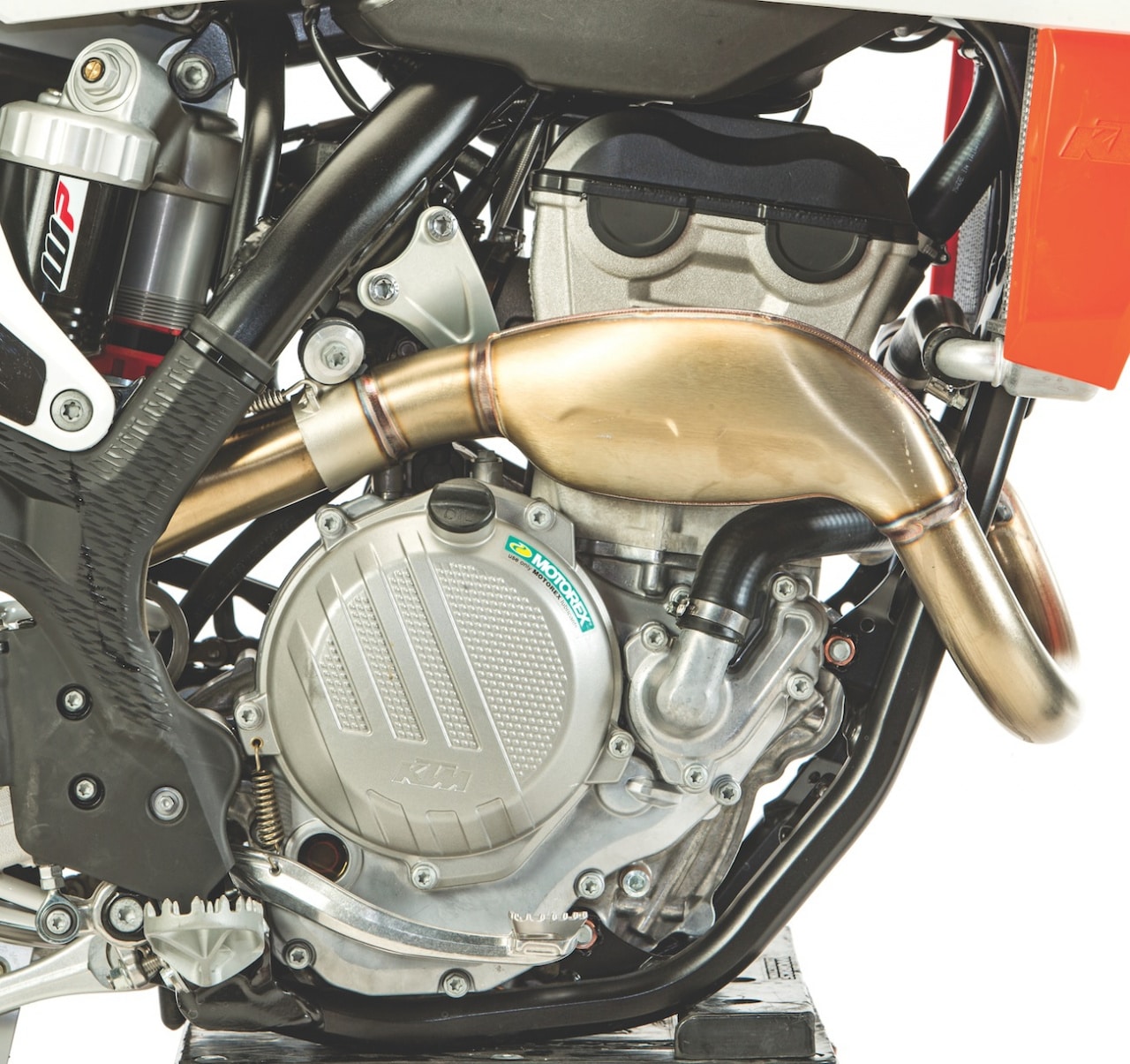
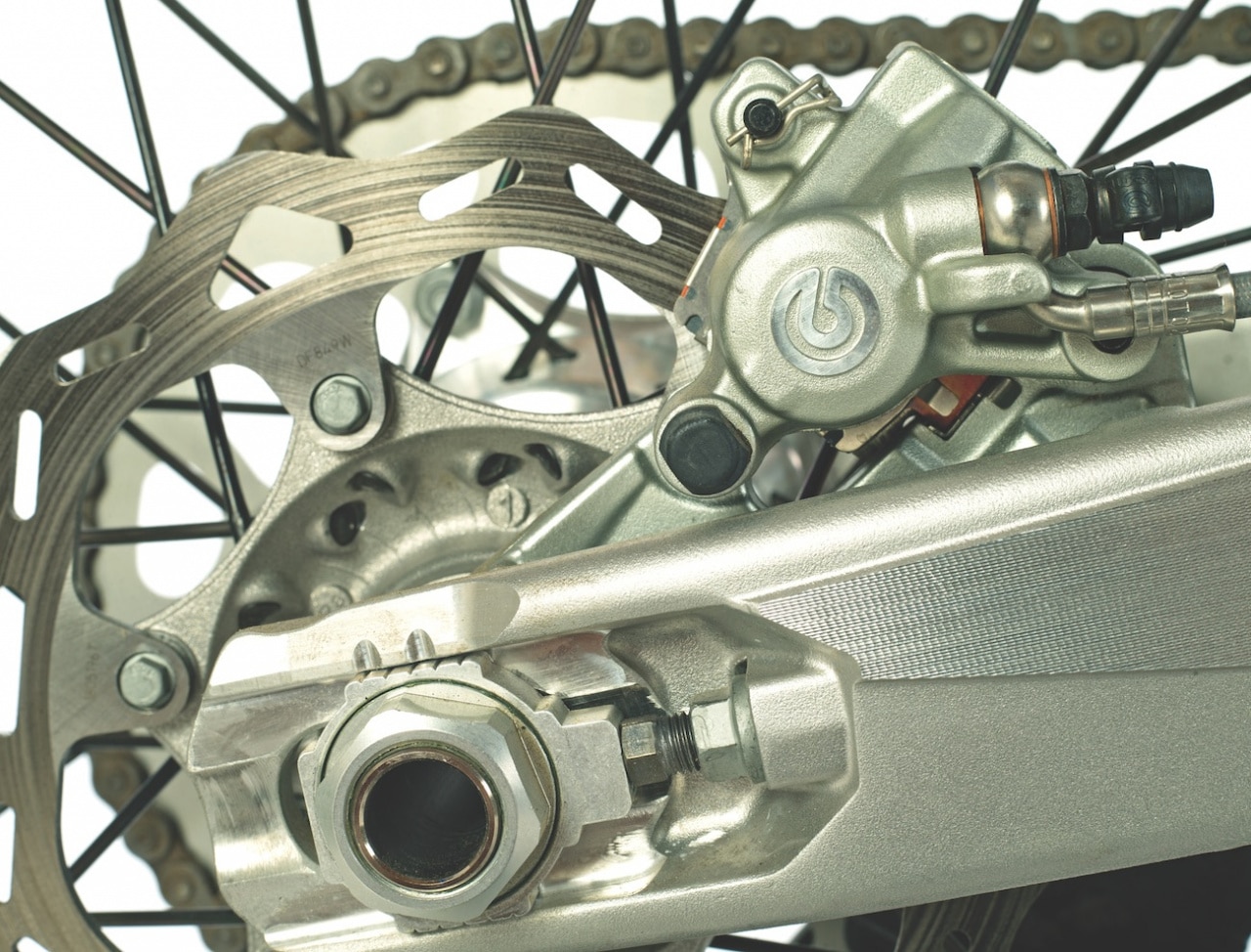




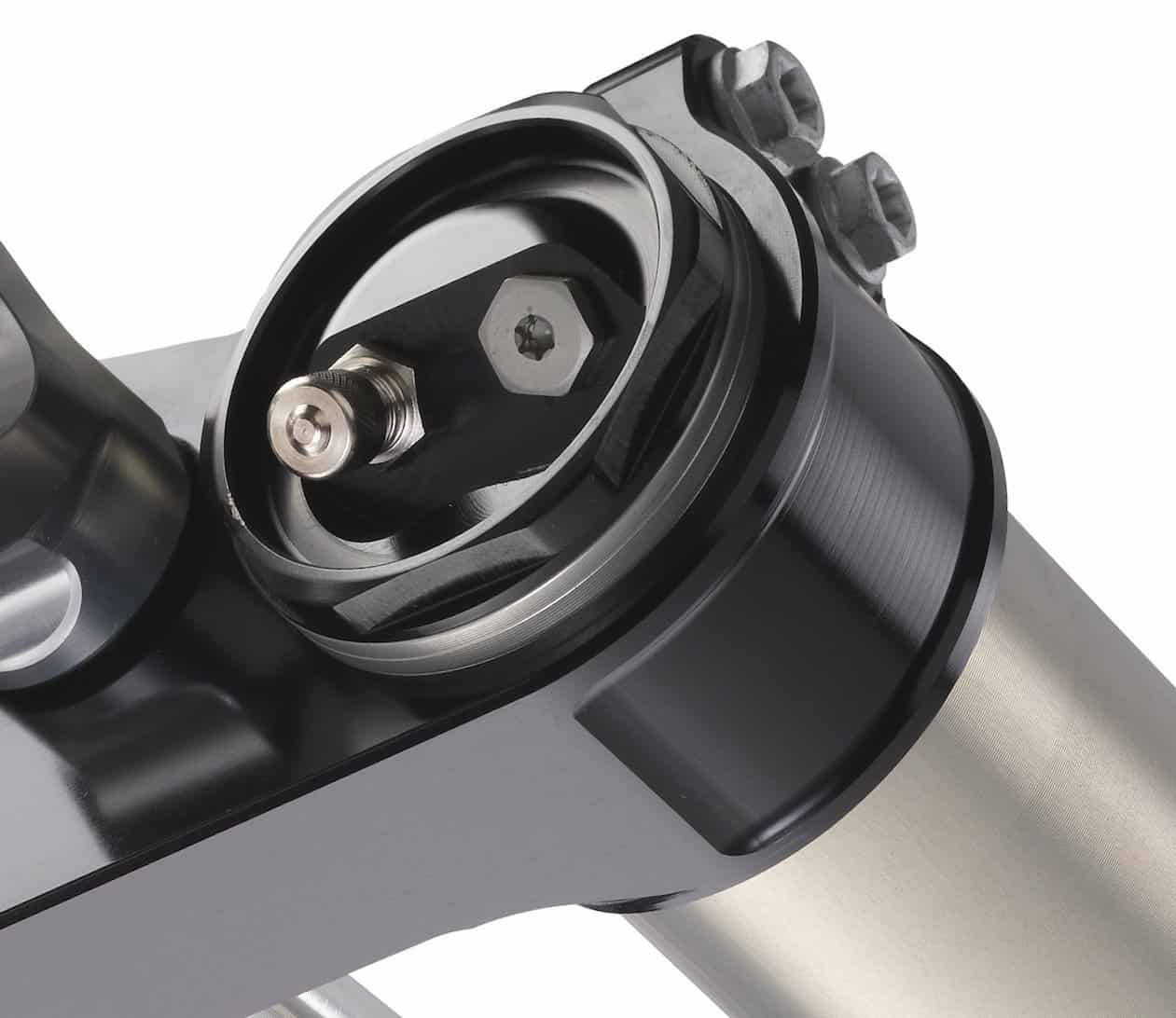




Comments are closed.